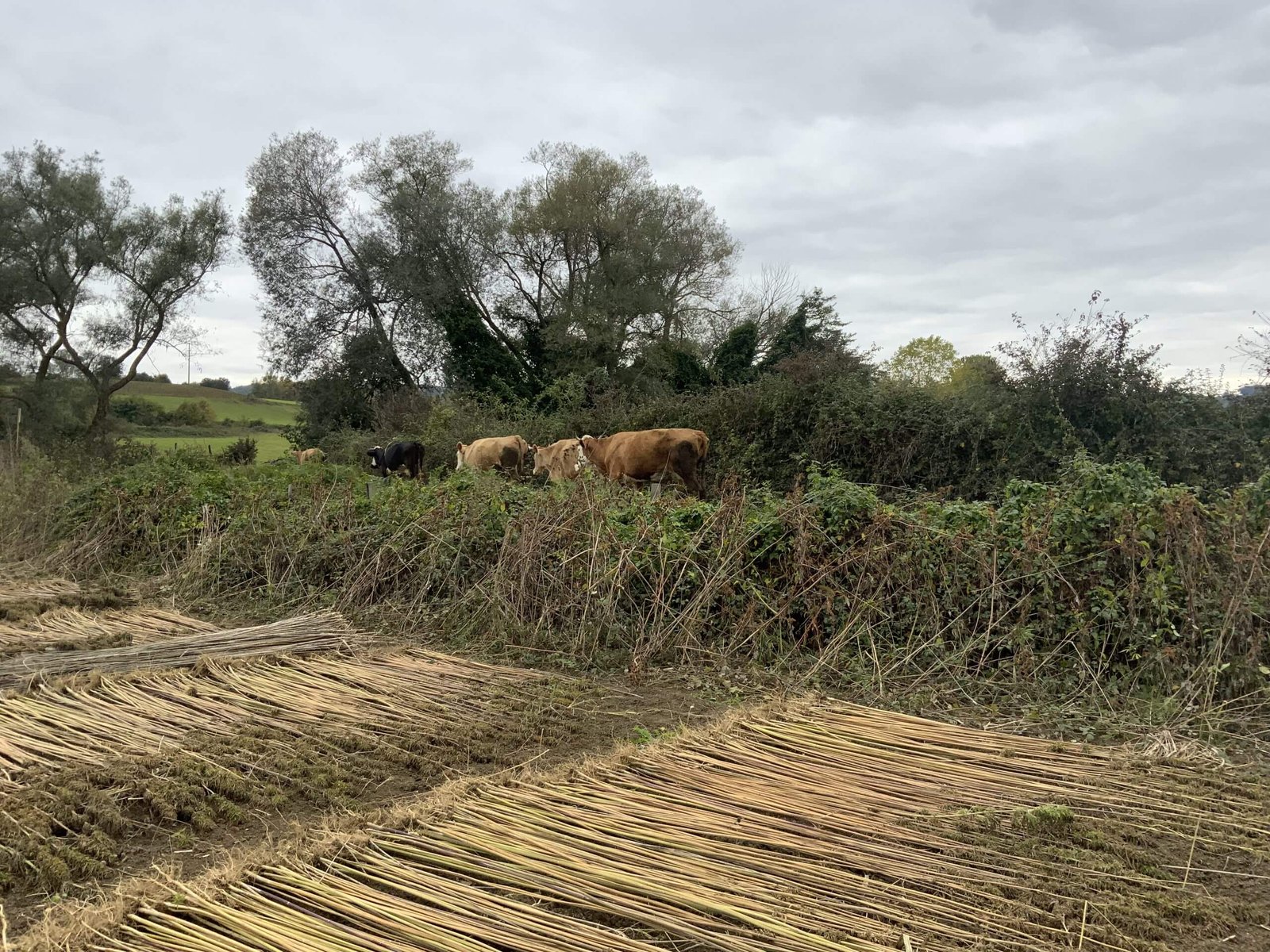Regenerative Agriculture with Hemp High-value Raw Material for Industries Carbon Sequestration Education and Workshops
Meet Hemp •
Meet Hemp •
Meet Hemp •
Meet Hemp •
Meet Hemp •
Meet Hemp •
Meet Hemp •
Meet Hemp •
Cannabis Sativa L.
Hemp is naturally resistant to agricultural diseases and pests. Can be grown with no pesticides, agricultural chemicals, fungicides. Unlike many other commercial plants, hemp needs little water and it is highly efficient when it comes to removing carbon dioxide.
It is considered one of the most environmental friendly commercial crops with thousands of uses, it has fast-growing cycle and reduces manufacturing costs as well as carbon emissions.
These properties put hemp in a superior position amongst other agricultural plants.
The production of Hemp is carbon negative, which means it absorbs more carbon from the atmosphere during its growth than is emitted by the equipment used to harvest, process and transport it.
Unlocking the Potential
From skincare and beauty products to sustainable textiles and eco-friendly packaging, hemp has a wide range of applications that make it a valuable resource for the planet and for consumers looking for ethical and sustainable options. Learn more about our brands serving the way in the hemp industry and the products they offer.







Regenerative Hemp Practices
Regenerative agriculture with hemp is all about bringing soils back to life!
“Social not to be isolated from the ecological”
Our aim as ecological stewards is genuine harmonization of humanity with nature. Eliminating human-nature hierarchy with daoist approach.
Hemp Mulch
Building soil health. Protecting the soil from hot summers and cold winters, favorable to micro-organisms.
Up to %80 water-retention, erosion control, weed reduction.
Compost Systems
Recipes for production needs focused on improvement and diversity of the soil food web organisms.
Plant Rotation
Although hemp can be successfully grown continuously for several years on the same land, in long run we prefer rotation with other crops. 4-year rotation involves cabbage, carrots, beets, spinach, onion, garlic, legumes and clover or alfalfa. It matters very little what crops are grown prior to hemp.
Fungi
While the understanding of soil carbon stabilization mechanisms is evolving, there is a positive relationship between the abundance of fungal biomass and soil carbon. Fungi are predominantly responsible for fixing soil carbon, and for fixing it over long time periods to such an extent that it is consequential to the global carbon cycle.
No Deep Tilling
Minimizing soil disturbance, increasing soil organic carbon.
We prefer enhancing soil quality and soil biodiversity with biological processes that earthworms perform, and their tunnels to aerate the soil.
Hemp Biochar
Created through the pyrolysis hemp ethanol fuel-making process, we apply biochar to degraded soils in order to enhance its quality and microbial properties. Helps farmers to reduce the need for nitrogen fertilizers.

Nature-Positive Raw Materials
As a renewable resource, hemp can be grown and harvested multiple times in a year, making it an excellent option for sustainable agriculture. Hemp fibers can be used to make textiles, building materials, and even bioplastics, all of which have lower environmental impacts than their traditional counterparts. By utilizing hemp as a raw material, we can reduce our reliance on non-renewable resources and promote a more sustainable future.

Phytoremediation
Preliminary work in Germany suggested that hemp could be grown on soils contaminated with heavy metals, while the fiber remained virtually free of the metals.
We find it unwise to grow hemp as an oilseed on contaminated soils, but such a habitat is suitable for a fiber or biomass crop. Our future plans include additional study for the possibility of using hemp for bioremediation.
(noted in Karus and Leson 1994)

Carbon Sequestration
Hemp is one of the best plants in terms of carbon sequestration. From the moment hemp is planted, it begins to absorb carbon from the atmosphere.
Hemp plants breathe in two times more carbon dioxide than trees. One acre of hemp can remove 10 tonnes of carbon from the air. The hurds obtained during the processing can be subjected to pyrolysis to obtain biochar with a high carbon ratio.
Biochars made from hemp can be used to increase soil fertility or to capture carbon in building materials and lower their carbon footprint.
Earthist Soil Web
The next evolution of agriculture on the earth starts with seeds of compassion and love. Enriching the soil, protecting communities of bacteria, fungi and plants.
Ecological Stewards with regenerative practices connect through the soil, growing exponentially like mycelium.
Regenerate and earn. Earn to regenerate.
Welcome to Web🌳
Join Regenerative Finance
- Improve infrastructure and
- Create a sustainable ecosystem
- Data Collection & Storage
- Knowledge Sharing
- Access to Seed bank
- Treasury (Gnosis Safe)

“The ultimate goal of farming is not the growing of crops, but the cultivation and perfection of human beings.”
— Masanobu Fukuoka
by earth • for earth •
by earth • for earth •
by earth • for earth •
by earth • for earth •
by earth • for earth •
by earth • for earth •
by earth • for earth •
by earth • for earth •
Meet The Community
Regenerative hemp farmers and environmental stewards; a multidisciplinary community seeking a genuine harmonization with nature.

Earthist is started as a collective transforming into a DAO (Decentralized Autonomous Organization) working together
on every level from seed to sales.
Our journey started with cold-pressing seeds for oil for our friends and family and then learned about the lost seeds of Mesopotamia; the oldest civilization has known. The best ways to save the seeds were to grow them. So as farmers already, we became hemp farmers by combining the wisdom of this ancient plant and our agricultural regenerative practices respecting cultural traditions in different regions.
We propose to clean the highly degraded soil while creating jobs for small farmers and support local artisan groups for the best hemp creations that are useful. One of the challenges we face was very slow and short-term policies.
Hemp is hope and a vital part of the solution.













